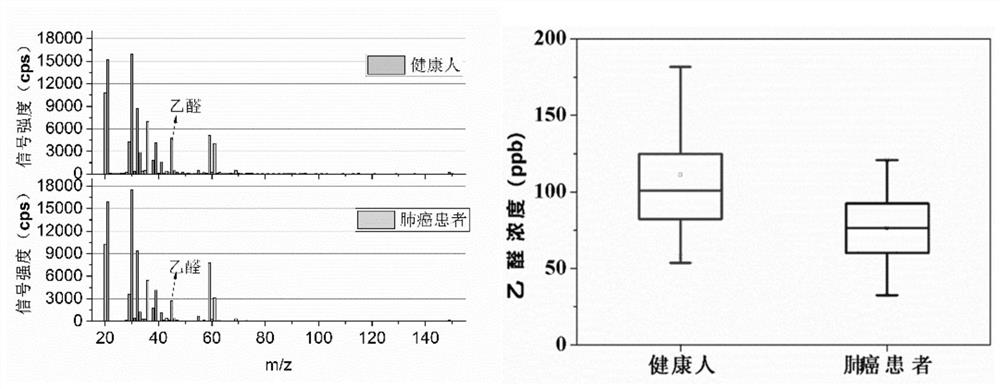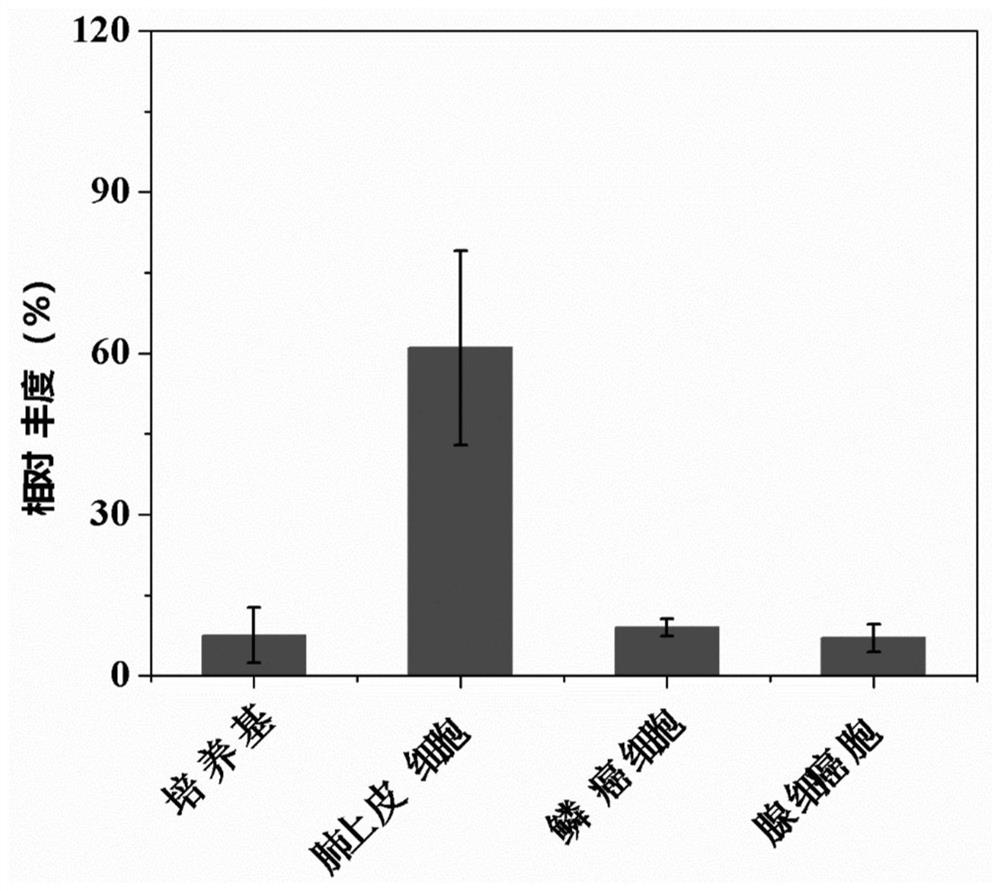Lung cancer gas marker in expiration and application of lung cancer gas marker in lung cancer screening
A technology for biomarkers and lung cancer, applied in measuring devices, instruments, and material analysis through electromagnetic means, can solve problems such as unstandardized sampling methods, high costs, and inability to identify early pulmonary nodules
- Summary
- Abstract
- Description
- Claims
- Application Information
AI Technical Summary
Problems solved by technology
Method used
Image
Examples
Embodiment 1
[0039] Example 1 Screening of breath biomarkers associated with lung cancer
[0040] (1) Subject breath sample collection
[0041] The invention screens out the early lung cancer biomarkers in the breath by analyzing the breath of early lung cancer patients and normal people. The breath samples came from three experimental centers: 22 lung cancer patients and 90 normal people in the first experimental center, 27 lung cancer patients and 88 normal people in the second experimental center, and 29 lung cancer patients and 111 normal people in the third experimental center. A normal person, lung cancer patients use tissue biopsy, computed tomography (CT) scanning or puncture three methods in the diagnosis process. All normal controls were accompanying family members in the same ward as the patients. Informed consent was obtained from the patients for the breath test, and all were approved by the organizational ethics committee. The breath sample collection adopts the method of ...
Embodiment 2
[0046] Embodiment 2 Lung cancer cells release acetaldehyde compared with normal lung epithelial cells
[0047] (1) Cell culture
[0048] Common lung cancer cells squamous cell carcinoma cells CALU-1, adenocarcinoma cells SPC-A1 and normal lung epithelial cells BEAS-2B were selected as detection objects. The model of the petri dish is RPMI-1640, add 10% bovine fetal serum and 100U / mL double antibody, at 37°C and 5% CO 2 Cultivate under the condition of , after the cells grow well, continue to cultivate for 24 hours after changing the medium, and use it for detection.
[0049] (2) Testing instrument
[0050]Gas chromatography-mass spectrometry was selected as the detection instrument. The chromatographic column model was TG-624SiIMS (30m×0.32mm×1.8μm). 1min. The temperature of the injection port, transfer line and ion source were all 200°C.
[0051] (3) Sampling method
[0052] Cell culture dish headspace gas was enriched for 40 min using 75 μm Carboxen / PDMS solid-phase mi...
PUM
 Login to View More
Login to View More Abstract
Description
Claims
Application Information
 Login to View More
Login to View More - R&D Engineer
- R&D Manager
- IP Professional
- Industry Leading Data Capabilities
- Powerful AI technology
- Patent DNA Extraction
Browse by: Latest US Patents, China's latest patents, Technical Efficacy Thesaurus, Application Domain, Technology Topic, Popular Technical Reports.
© 2024 PatSnap. All rights reserved.Legal|Privacy policy|Modern Slavery Act Transparency Statement|Sitemap|About US| Contact US: help@patsnap.com









